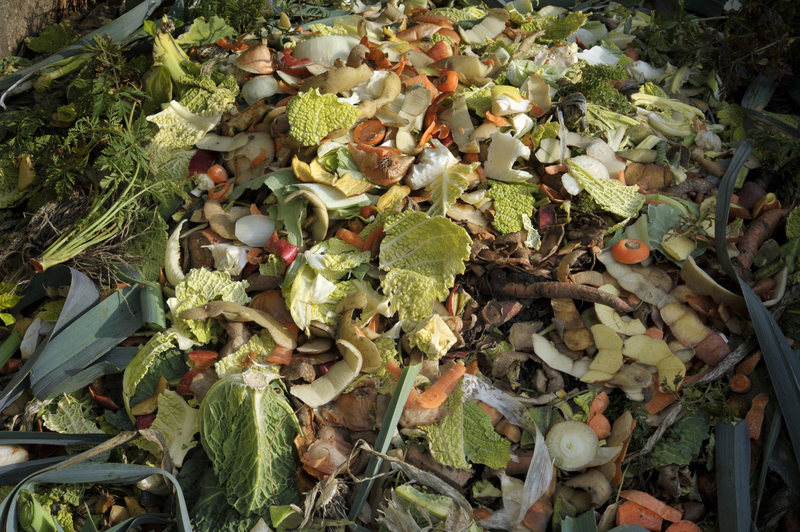A Comprehensive Look at Builders Skips
Builders skips are an essential part of both domestic and commercial construction projects. Whether you're a professional contractor, a self-builder, or a homeowner managing a renovation, the efficient removal of waste is crucial. In this comprehensive guide, we'll explore everything you need to know about builders skips, including their sizes, uses, benefits, regulations, cost factors, and top tips for hiring. Read on for an in-depth examination of builders skips and make your next project easier and more efficient.

What Are Builders Skips?
A builder's skip refers to a specific size and type of waste container used predominantly in the construction industry. They're designed to handle heavy and bulky waste produced during building projects, including soil, concrete, bricks, timber, metals, and mixed rubbish. If you're tackling extensive clearances or renovation projects, builders skips are an invaluable resource to manage waste safely and compliantly.
Types and Sizes of Builders Skips
Understanding the different sizes of builders skips is vital to choosing the right one for your project. Here are the most common sizes and their typical uses:
- 6 Yard Builders Skip: Usually regarded as the classic builders skip size. Ideal for medium-sized renovation or construction waste.
- 8 Yard Builders Skip: The most popular skip for building projects, it can handle heavier loads and larger volumes of mixed construction waste.
- 10 and 12 Yard Builders Skips: Intended for lighter, bulkier waste as weight restrictions may apply. Good for general building and commercial clearances.
Comparison Table: Builders Skips Sizes
| Skip Size | Capacity (approx bins/bags) | Typical Uses |
|---|---|---|
| 6 Yard | 50-60 bin bags | Ideal for medium renovations, garden clearances |
| 8 Yard | 60-80 bin bags | Most popular for builders, suitable for heavy rubble |
| 10 Yard | 80-100 bin bags | Large renovations, bulky waste |
| 12 Yard | 100-120 bin bags | Light but large volumes of waste, commercial projects |
A key consideration is the type of waste you intend to dispose of. Heavier materials might be restricted in larger skips due to transport laws regarding weight. Always check with your skip hire provider about what's acceptable and any limits.
Common Uses for Builders Skips
Builders skips are versatile and suitable for a wide range of projects, such as:
- Home renovations and refurbishments
- Demolition debris disposal
- Garden and landscaping waste
- Large-scale clear outs (attics, garages, sheds)
- Commercial construction and office refits
- Disposal of general building materials: bricks, concrete, tiles, timber, metals, plastics, old fixtures/fittings
They are the industry standard for managing construction and renovation waste safely and efficiently.
Advantages of Using Builders Skips
Hiring a builders skip offers multiple advantages for both homeowners and building contractors:
- Efficient waste management - Keeps site tidy, reduces hazards, and helps with regulatory compliance.
- Time-saving - No need for multiple dump runs. Everything goes into the skip for collection.
- Cost-effective - One skip handles a large volume of waste, potentially reducing overall disposal costs.
- Environmentally responsible - Most skip providers recycle or responsibly process the waste, helping reduce landfill.
- Flexible rental periods - Skips can be hired to fit the timeline of your project, from a few days to several weeks.
By choosing the right builders skip size and adhering to guidelines, you can maximize your efficiency and minimize environmental impact.
Legal and Safety Regulations
Understanding skip hire regulations is key to avoiding fines and keeping your site safe. Important considerations include:
Placement and Permits
- If the builder's skip will be placed entirely on private property (e.g., driveway or construction site), usually no permit is needed.
- If the skip must be placed on a public highway or road, you need a skip permit from the local council. Your hire company can often arrange this, but it's your responsibility to check.
- Skips on public land require safety measures: warning lights, reflective markers, and sometimes safety cones.
Restrictions on Waste
- Hazardous materials such as asbestos, chemicals, paint, tyres, and electrical appliances typically cannot be placed in builders skips. Special disposal is required.
- Most building waste is accepted, but always confirm with your skip company if unsure.
Weight and Loading
- Do not overfill - skips must be loaded "level" with the rim for safe transport.
- Weight restrictions: Larger skips are not intended for dense, heavy waste. Overloading can cause collection refusal or extra charges.
*Always check updates to local regulations as breaches can result in significant fines or removal of skips without notice.
How to Hire a Builders Skip
Step 1: Assess Your Waste Volume
Estimate how much waste your project will generate. Overestimate to avoid needing an extra skip later on, which is more costly.
Step 2: Pick the Right Size
Select the correct builders skip size for your needs. Discuss with your skip provider for expert advice if in doubt.
Step 3: Obtain Necessary Permits
If you need to put the skip on a public road, arrange a skip permit through your local council or skip company.
Step 4: Arrange Delivery and Collection
Decide on a convenient delivery date. Ensure the spot is accessible and clear for placement. Book your collection date in advance to ensure timely removal.
Step 5: Fill Your Skip Responsibly
- Distribute weight evenly
- Break up large pieces to maximize space
- Follow waste restrictions and do not overfill
Builders Skips: Cost Factors
The cost of builders skips varies depending on several factors:
- Skip size: Larger skips cost more
- Hire duration: Longer hire periods increase price
- Location: Prices differ regionally; cities are often more expensive
- Permit fees: Additional if needed for public road placement
- Type of waste: Heavier or restricted waste can attract surcharges
Typically, an 8-yard builder's skip for 1-2 weeks might cost between ?200-?350 in the UK, with permits adding ?30-?70. Prices in other countries will differ, and it's best to obtain several quotes for comparison.
Tips for Reducing Skip Hire Costs
- Book in advance, especially during peak building seasons
- Share a skip with a neighbour or nearby project if possible
- Choose the smallest skip that will meet your needs
- Separate recyclable waste where possible - some providers offer lower rates for sorted waste
Sustainable Waste Disposal with Builders Skips
Environmental responsibility is a growing priority in building and construction. Professional skip companies typically sort, recycle, and properly dispose of waste, significantly reducing the environmental footprint of your project. A few eco-friendly practices include:
- Segregating recyclable materials before putting in the skip (wood, metal, plastics, etc.)
- Choosing a skip company with a strong environmental policy
- Never including hazardous items; use licensed facilities instead
By using builders skips hire, you're supporting a more sustainable approach to construction waste--mitigating landfill waste and promoting recycling.
Frequently Asked Questions About Builders Skips
What Can You Put in a Builder's Skip?
- Soil, rubble, bricks, concrete
- Plasterboard, timber, flooring
- Metals, plastics, tiles
- General construction waste
Check with your provider for a full list of acceptable waste types.
What Cannot Be Placed in Builders Skips?
- Asbestos, chemicals, paint tins, explosives
- Batteries, fridges/freezers, monitors, televisions
- Tyres, gas cylinders, electrical equipment
These require specialist disposal to avoid legal and environmental repercussions.
How Long Can You Hire a Builders Skip For?
Hire periods are very flexible, ranging from a few days up to several weeks. Typical hires last 1-2 weeks, but you can arrange extensions for a fee.
Do I Need to Be Home for Skip Delivery or Collection?
Usually, you do not need to be present if the location is accessible and clear. Provide instructions to your provider for stress-free delivery.
How Much Space Do I Need for a Builder's Skip?
An 8-yard skip is approximately 3.6m (12ft) in length and 1.8m (6ft) in width. Ensure enough room for skip lorry access!

Builders Skips: Safety Best Practices
- Never move the skip after delivery - only trained personnel should relocate them
- Do not light fires in or near the skip
- Keep children and pets away from skips
- Load waste safely, avoiding overfilling or dangerous overhangs
- Inform your provider if hazardous waste is discovered mid-project
If you follow these foundational safety tips, your builders skips will serve you efficiently and safely, no matter the scale of your building job.
Conclusion: Why Builders Skips Are a Construction Essential
To summarize, builders skips are a vital asset for effective waste management on building projects--delivering convenience, regulatory compliance, environmental responsibility, and cost savings. Their wide range of sizes and flexibility makes them suitable for nearly any project, from simple property renovations to extensive commercial developments.
Choosing the right builders skip hire service ensures that your waste is handled professionally, keeping your site safe, tidy, and legally compliant. Always verify provider credentials, know your local regulations, and plan your skip hire in advance to ensure smooth project execution.
With this comprehensive guide to builders skips, you'll be ready to meet the demands of your building project equipped with the knowledge to choose, use, and maximize the value of your next skip hire.
Ready to Get Started?
If you're planning a project, contact your local builders skip hire company for expert advice, transparent pricing, and peace of mind. Efficient waste disposal is the foundation of every successful build.